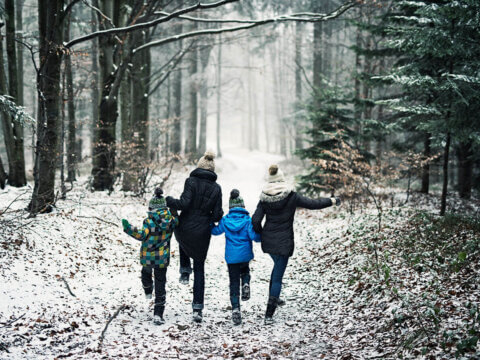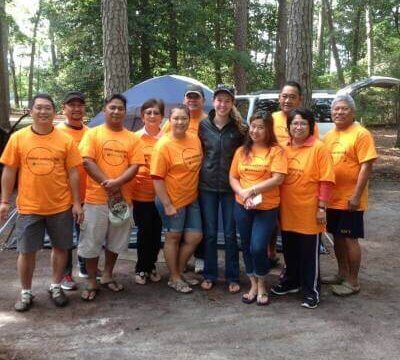20 WAYS TO CREATE A NATURALLY RESTORATIVE HOME AND GARDEN

Want to improve your family’s mental and physical health, and increase their creativity and learning abilities? Research suggests that a more natural environment can help. So start at home. Whether you’re building a new house or retrofitting an existing home and garden, here are a few tips for applying the Nature Principle. Your kids can help!
Indoors
-
Bring the outside in. Create “living walls” of ficus, hibiscus, orchids, and other plants; or an indoor vertical vegetable garden with a drip-irrigation system. Such walls can reduce indoor air pollutants.
-
Record nature sounds and fill your house with them.
-
Use nature-based furniture and decorations such as a dresser made of reclaimed wood, or floors or rugs made of sustainable bamboo or bamboo fabric.
-
Use trees, live or dead, as decoration in high-ceilinged living rooms.
-
Use lights that adjust throughout the day via sensors at the windows.
-
Combine solar panels with skylights. Install them over water gardens and other living features.
-
To protect wildlife, add bird-warning elements to windows.
Outdoors
-
With your family, plant an organic vegetable garden and include fruit trees.
-
Install a beehive, or raise chickens or ducks for eggs. Some cities are loosening regulations to encourage yard farming.
-
Create nature-rich calming places to sit, read, think and do that most radical act: have a conversation.
-
Reduce your lawn. Replace it with bird-attracting plants, trees and bushes. (Lawns are now the largest irrigated crop in the United States.)
-
Plant a butterfly garden; help bring back a butterfly migration route.
-
Space-restricted urbanites can use dwarf tree varieties and mini-gardens to transform small balconies and windowsills.
-
Install a chlorine-free natural swimming pond cleaned by regeneration zones: aquatic plants, rocks, loose gravel, and friendly bacteria that act as water filters.
When building a new home
-
Design natural landscapes to look good from the curb and also from inside the home.
-
Place the house in sync with the sun’s movements, so that sleeping and waking are in accord with available light; place large windows on the south-facing wall for passive solar heating, but also for a view of nature.
-
Design for natural airflow with appropriately placed windows and high ceiling fans for natural ventilation.
-
If site and regulations allow, build your home with cordwood masonry (lumber set in earthen mortar), cement mixed with recycled-paper pulp, aerated concrete or straw-bale walls. Homes built with these materials can be so energy efficient that they need no air-conditioning – and you’ll receive the health benefits of fresh air.
-
Install a super-insulated green roof that can last 80 years (compared with the 40-year average for conventional roofs) and at the same time create wildlife habitat – which may improve your mental health.
-
Whenever possible, use local materials to reflect the natural history of the region to may deepen your sense of regional and personal identity.
-
Network News
POLICY UPDATE: Policy and advocacy for the children and nature movement
-
Voices
Binoculars, bald eagles and my journey as a Black birder
-
Richard Louv
THE WONDER BOWL: Ten Spring and Summer Nature Activities for Kids and Adults
-
Network News
Minneapolis Spotlight: The promise and possibilities of parks for youth
-
Voices
Why nature is my motherhood ally







Commentaries on the C&NN website are offered to share diverse points-of-view from the global children and nature movement and to encourage new thinking and debate. The views and opinions expressed are those of the author(s) and do not necessarily reflect the position of C&NN. C&NN does not officially endorse every statement, report or product mentioned.